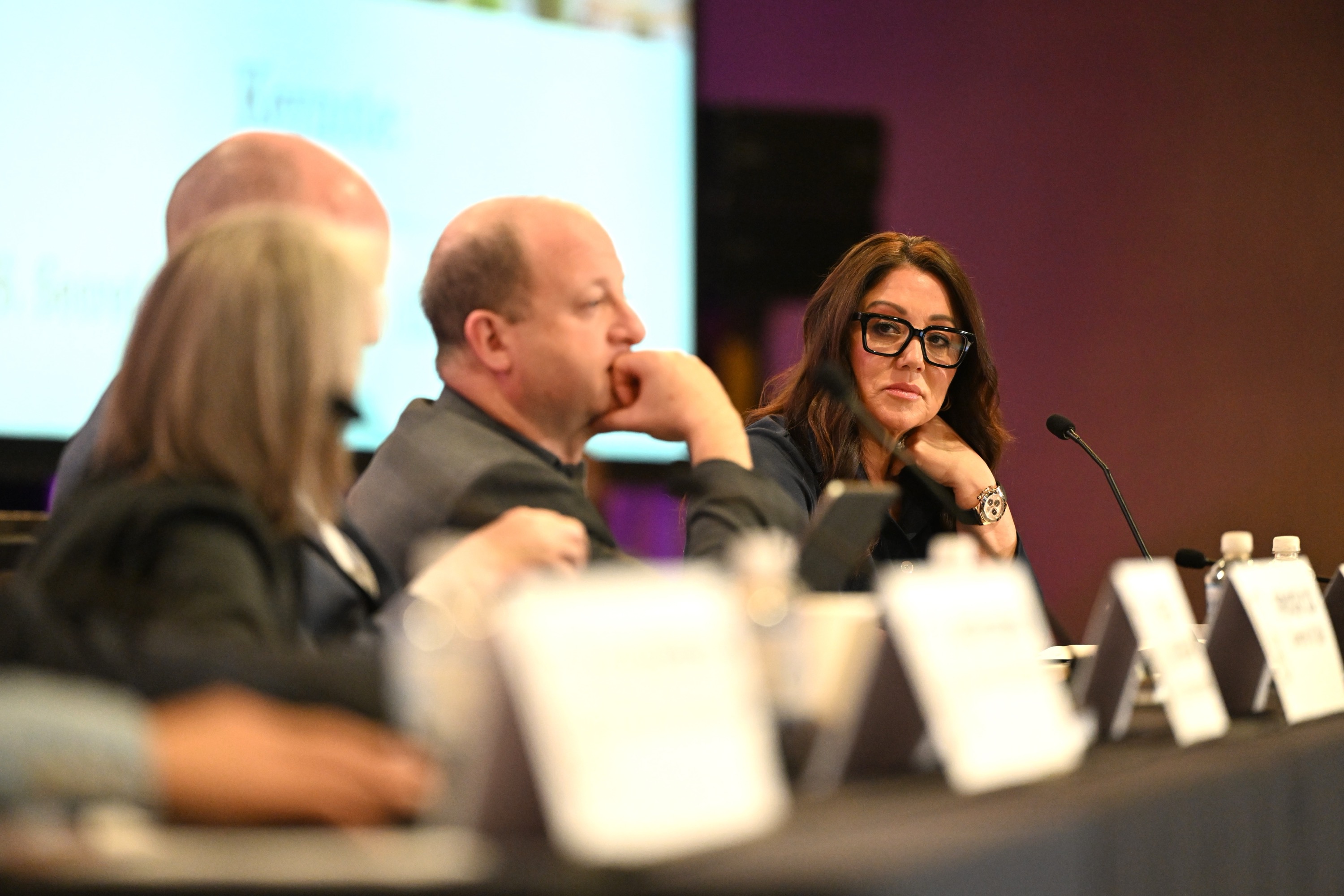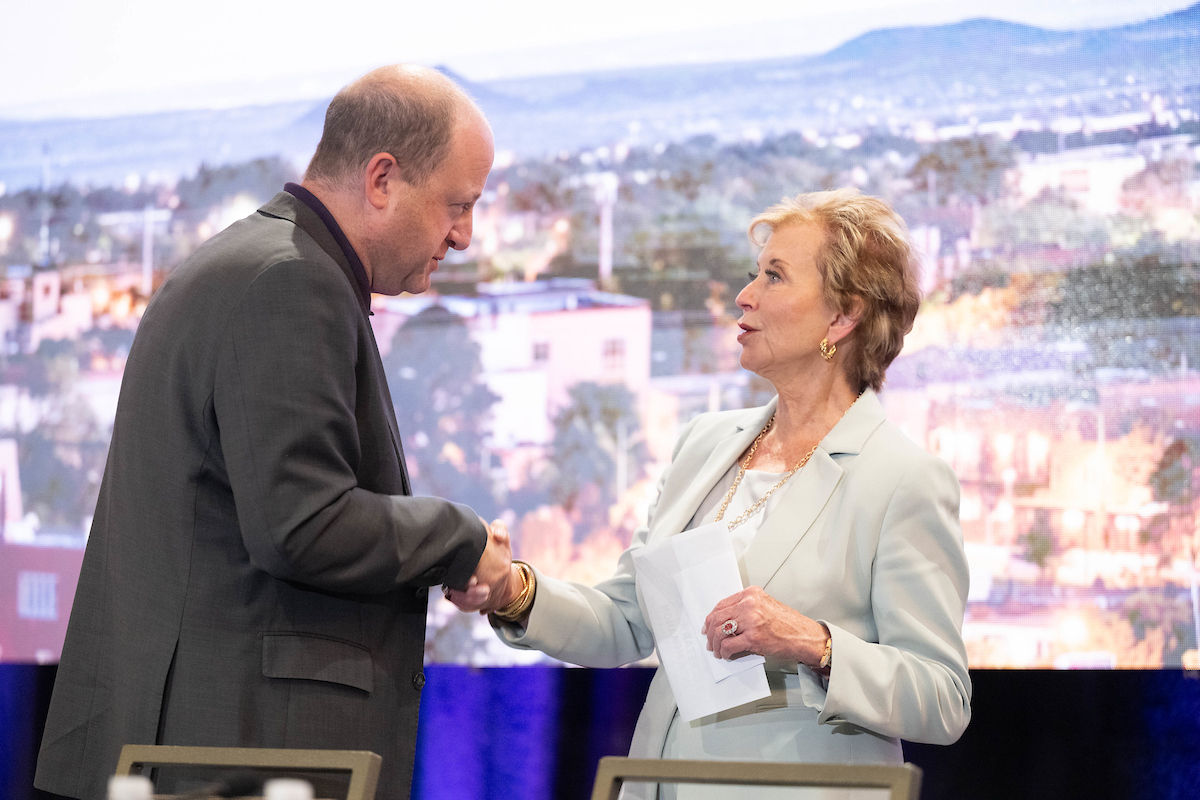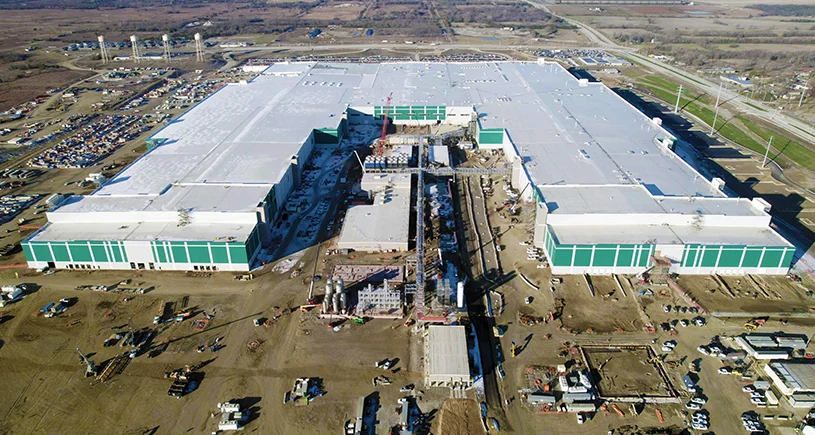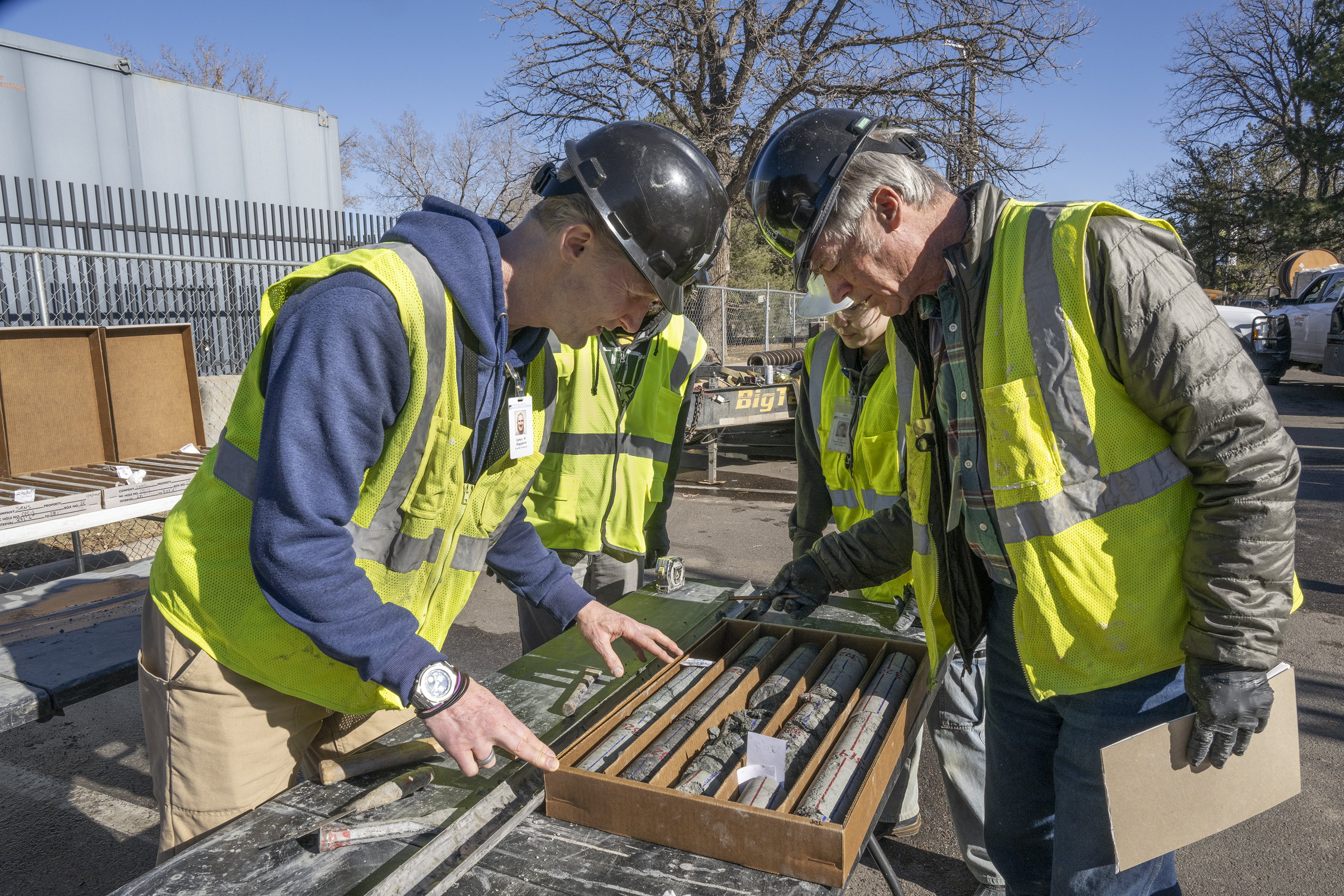07/17/25
Best of the West: Apprenticeships spur the western workforce; Largest EV battery plant; Rare earth mine; Turquoise alerts launch; and a fossil found under science museum

The Western Governors' Association keeps you updated on the latest news in the West. Here are the top stories for the week starting July 14, 2025. (Photos courtesy of Adobe Stock Images, Panasonic, and The Denver Museum of Nature and Science).
Last month, Secretary of Labor Lori Chavez-DeRemer joined Western Governors at WGA’s Annual Meeting for a discussion on ways to support the American workforce.

The Secretary’s focus on registered apprenticeships shows an embrace of workforce training programs, which have sometimes taken a back seat to more traditional career pathways, like higher education.
Her sentiment was echoed at the Annual Meeting by Education Secretary Linda McMahon, who told Western Governors that the education system should be reoriented to prioritize a successful career, instead of a certain diploma. Secretary McMahon said that apprenticeships and technical education programs should play an important role in that reorientation.
Education Secretary Linda McMahon, who told Western Governors that the education system should be reoriented to prioritize a successful career, instead of a certain diploma. Secretary McMahon said that apprenticeships and technical education programs should play an important role in that reorientation.
Both Secretaries are backed by an April executive order that called for 1 million active apprenticeships across the country. Currently, the Labor Department estimates that there are nearly 700,000 registered apprenticeships nationwide.
In the West, apprenticeship programs are helping to support and train workers in a variety of industries, from firefighting to Hollywood.
Earlier this year, the International Association of Fire Fighters announced a new federal apprenticeship program for careers in fire service and EMS. The program is the first-ever federal apprenticeship program for fire fighters and paramedics in the country.
In California, Governor Gavin Newsom’s push to expand apprenticeship programs has added nearly 200,000 apprentices since he took office. Thousands of those new apprentices are firefighters, and the majority of professional firefighters in California are now trained through apprenticeship programs.
Last week, First Partner Jennifer Siebel Newsom highlighted another innovative California apprenticeship program, which prepares underrepresented youth for jobs in the entertainment industry.
In Montana, Governor Greg Gianforte recently announced that the state will launch its first apprenticeship program for teachers, backed by a $4 million grant from the Department of Labor. Teachers will be paid throughout the apprenticeship program, and they will earn their licenses as K-12 educators upon completion of the program.
A similar program in Nevada has quickly grown to become one of the largest and most successful teacher apprenticeship programs in the nation, just a few years after being established through the University of Nevada, Las Vegas.
In Washington, an apprenticeship program is helping grow the labor force for the state’s ferry system, which is the country’s largest. Governor Bob Ferguson has made fast, reliable ferry service a priority for his administration since taking office.
Last week, Kansas announced that it had reached the highest number of registered apprentices in state history, with 3,500 apprentices across the Sunflower State. The 1,000 employers participating in registered apprenticeship programs are also a record high for the state.
For more on Western Governors’ bipartisan work on apprenticeships and workforce development innovations, read Policy Resolution 2025-03, Workforce Development in the Western United States.
Nation’s largest EV battery plant: this week, Kansas Governor Laura Kelly celebrated the grand opening of the country’s largest electric vehicle battery manufacturing plant.
Panasonic is investing $4 billion in its new plant in De Soto, Kansas, making it the largest economic development project in the company’s history, and the largest in Kansas history. The project is estimated to bring $2.5 billion in new economic development to the state every year, along with 4,000 new jobs.
Kansas, making it the largest economic development project in the company’s history, and the largest in Kansas history. The project is estimated to bring $2.5 billion in new economic development to the state every year, along with 4,000 new jobs.
“Panasonic’s state-of-the-art EV battery plant marks a bright new era in Kansas,” Governor Kelly said. “The monumental effort that has gone into every aspect of this project has culminated in this historic day as the plant begins mass production of EV batteries. It’s hard to overstate what Panasonic’s investment means to Kansas and the value of the partnership that made it possible.”
The 300-acre facility will have the capacity to produce 66 lithium-ion batteries every second.
Rare earth mine opens: the first U.S. rare earth metals mine in 70 years opened in northeastern Wyoming last week.
Governor Mark Gordon and Wyoming’s full congressional delegation joined Energy Secretary Chris Wright in Ranchester, Wyoming, to celebrate the opening of the Brook Mine, which will produce both coal and rare earth materials.
The facility will extract critical minerals like gallium, scandium, and germanium from Brook Mine coal and sell the processed coal as fuel.
“Wyoming continues to be a leader in energy innovation, including the expansion of our critical mineral industries and energy technologies,” said Governor Gordon. “Today, we celebrate this project and the exciting potential for Wyoming coal and rare earth minerals, with their role in expanding Wyoming’s energy economy and strengthening national security.”
Read Western Governors' bipartisan policy resolution, National Minerals Policy, for more on the Governors' collective policy on critical minerals.
Turquoise alerts launch: New Mexico and Arizona both recently launched “turquoise alert” systems to help combat the crisis of missing and murdered Indigenous persons.
New Mexico Governor Michelle Lujan Grisham signed her state’s turquoise alert system into law in April, and Arizona Governor Katie Hobbs signed her state’s version in May.
The new alert systems are designed to function like an “amber” or “silver” alert, and lawmakers hope they will help locate and recover missing Indigenous persons more quickly and effectively.
For more on Western Governors’ bipartisan policy on the MMIP crisis, read Policy Resolution 2023-09, Missing and Murdered Indigenous Persons.
Fossil found under science museum: the Denver Museum of Nature and Science, which has exhibits full of dinosaur skeletons, recently stumbled upon a 70-million-year-old dinosaur fossil beneath one of its own parking lots.
of Nature and Science, which has exhibits full of dinosaur skeletons, recently stumbled upon a 70-million-year-old dinosaur fossil beneath one of its own parking lots.
The museum was drilling test wells – financed by Governor Jared Polis’ Geothermal Energy Grant Program – to determine the viability of transitioning from natural gas to geothermal energy when it unexpectedly unearthed a partial-bone fossil 763 feet below the surface.
“In my 35 years at the Museum, we’ve never had an opportunity quite like this — to study the deep geologic layers beneath our feet with such precision,” said Earth Sciences Research Associate Dr. Bob Raynolds. “That this fossil turned up here, in City Park, is nothing short of magical.”
The fossil is now on display in the Museum’s “Discovering Teen Rex” exhibition.